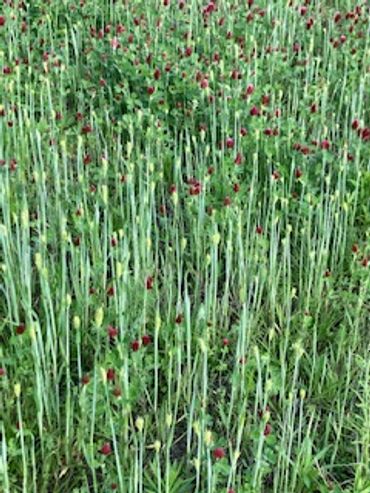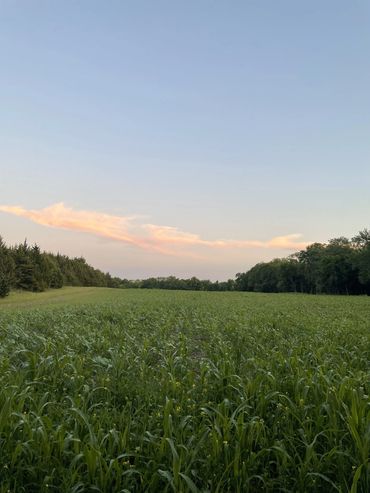Regenerative Agriculture

Practicing Regenerative Agriculture on Monmouth Farm
Regenerative agriculture applies soil health principles to farming practices used in operations. This does not mean an exact prescription of farming practices used. Rather, these principles are a guide, allowing each farm or ranch to fit the right practices best supporting their specific situation. Guided by the Regenerative Agriculture principles, degraded soils can be improved and made productive again. The goal is to create and maintain a healthy, functioning soil ecosystem. We've relied heavily on our cover crop seed supplier, Green Cover Seed, for advice and guidance on regenerative agriculture and effective cover crop use.
The 6 Regenerative Agriculture Principles
1. Context - Know Your Farm
2. Cover the soil: Build Armor
3. Minimize Soil Disturbance
4. Increase Plant Diversity
5. Keep Living Roots in the Soil
6. Integrate Livestock
We believe regenerative agriculture is about a journey, not a destination. In this pursuit we seek the following benefits:
- building soil organic matter and soil biodiversity
- improving soil drought resistance and flood resilience
- decrease use and dependence on chemical inputs
- cleaner air and water
- enhanced wildlife habitat
1st Principle: Context - Know Your Farm
Monmouth Farm is 88 acres of land overlooking the Wakarusa River in Southeast Shawnee County. We are an upland family farm, located in the Upper Wakarusa/Lower Kansas River watershed: a priority area for managing water quality.
We receive about 35 inches of precipitation annually (average since 1900), with June typically being the month of most precipitation. Spring is the driest season for us. The average last frost date of Spring is April 21 and the average first frost date in Fall is October 13, giving us around 175 warm season growing days. We are in USDA growing zone 6A, with Winter lows averaging between -10 and -5 degrees F.
Our soils are silty clay loams, with most showing the effects of past erosion. We're working hard to bring these soils back to health and productivity.
At Monmouth Farm we consider ourselves in a continuous process of learning and improvement, working to be more effective stewards of our land.
2nd Principle: Cover the Soil
We work to keep fields with a canopy of growing plants and the residues from previous crops, in order to:
- Reduce Summer soil temperature
- Increase soil moisture
- Improve habitat for soil organisms, macro and micro
- Protect soil from environmental impacts such as erosion
- Manage weed populations
Cover crops play an important role in protecting our soils.
3rd Principle: Minimize Soil Disturbance
We try to minimize tillage and its effects on soil micropores/macropores, and resulting reduced water infiltration. Our goal is to minimize chemical inputs, with the added benefit of reducing costs.
4th Principle: Increase Diversity
We focus on diverse plant species mixes that build soil health and fertility, including cover crops. We strive to plant at least 4 plant families together: legumes, brassicas, broadleaf and grasses. This diversity of plant species is very effective in improving beneficial soil microorganisms and resulting soil health.
5th Principle: Keep Living Roots in the Soil
We work to keep living roots in the soil throughout the year, utilizing overwintering species as well as perennials. Living roots support soil organisms and healthy soil. Benefits include:
- Living roots working with soil microorganisms unlock bound nutrients, making them available to plants
- Plant roots scavenge nutrients, especially nitrogen, that otherwise may leach away
- Reduce erosion by improving soil infiltration
Fall planted Rouge de Bordeaux wheat is part of our strategy to keep living roots in the soil.
6th Principle: Integrate Livestock
The addition of livestock can improve soil health, biological activity, moisture efficiency and nutrient retention. We have not introduced livestock to our fields at this time but are looking at ways to do so directly or through the use of composted manures.
Photo Gallery







Copyright © 2020 Monmouth Farm LLC - Kansas - All Rights Reserved.
Powered by GoDaddy Website Builder